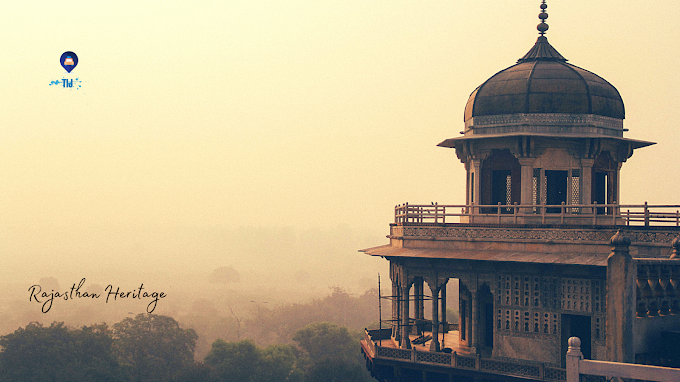Let's Begin! History of Jodhpur
As indicated by Rathore custom, the station follows its beginnings back to the Hindu god, Ram, the legend of the epic Ramayana. The Rathores have a place with the Suryavansha position of the Kshatriyas (the warrior rank of Hindus).
In 470 A.D. Nayal Pal vanquished the realm of Kanauj (close to current Kanpur in Uttar Pradesh). It remained Rathore capital for 7 centuries. In 1193 Kanauj tumbled to the Afghans drove by Muhammad Gauri.
A ruler Jai Chand fled from Kanauj yet was suffocated in the Ganga. In any case, his child Sihaji would be wise to karma and he came to Pali (close to Jodhpur).
Sivaji wedded with the sister of the then nearby ruler and it empowered the Rathores to set up themselves right now.
They flourished to such an extent, that in 1381 Rao Chanda figured out how to remove the Parihars (A Mali position of Jodhpur) of Mandore. Rathore's fortunes at that point turned for better.
Rao Chanda's child and beneficiary, Rainmal, won applause for his catch of Ajmer and acquired the Mewar position of royalty of Chittor. In 1438 he was doped with opium, lastly shot dead.
This activated unpleasant fights, finishing with Mewar and Marwar turning out to be discrete states.
History and Legends of Jodhpur
History of Rao Jodha Family.Rao Jodha, one of Rainmal's 24 children, fled Chittor lastly 15 years after the fact recovered Mandore in 1453. After five years he was recognized as a ruler.
A sacred man (Sadhu Sant) exhorted him to move his money to peak for security.
By 1459, it became apparent that a progressively secure home office was required. The high mountain 9 Km toward the south of Mandore was an undeniable decision for the new headquarter.
Rao Ganga Singh of Jodhpur (ruled 1516-32) battled close by the military of the incredible warrior ruler Rana Sanga of Mewar against the first Mughal Emperor Babur.
Be that as it may, throughout the following 50 years, the leaders of Jodhpur aligned themselves with Babur's grandson, Akbar.
A few leaders of Jodhpur became confided in lieutenants of the Mughals, for example, Raja Surender (who vanquished Gujarat and a great part of the Deccan for Akbar) and Raja Gaj Singh (who put down the resistance of the Mughal sovereign Khurram against his dad Jahangir).
With the help of the Mughals, the court of Jodhpur prospered and the realm turned into an extraordinary focus of expressions of the human experience and culture.
In the seventeenth century, Jodhpur turned into a thriving focus of exchange for the camel parades moving from Central Asia to the pieces of Gujarat and the other way around.
In 1657 Maharaja Jaswant Singh (ruled 1638-78) sponsored an inappropriate sovereign in the incredible war of progression to the Mughal honored position. He was in power for very nearly a quarter-century with Aurangzeb before he was conveyed to the outskirts as an emissary in Afghanistan.
Aurangzeb then attempted to hold onto the baby child of Maharaja Jaswant Singh, yet faithful retainers snuck the little ruler out of his grasp, covered up in a container of desserts.
The realm of Jodhpur at that point framed triple collusion with Udaipur and Jaipur, which together lost the Mughal burden.
Camel Safari in Jodhpur
Away from the groups at Jaisalmer (which has somewhat of notoriety for pressing all the camel-prepared sightseers on to one forlorn sandhill), I discovered some calmer and increasingly legitimate choices for investigating Rajasthan's Thar desert close to Jodhpur, and the little Rajasthani town of Osiyan.
Dabbed with cabins, structures and perpetual clean, I'd left any sentimental dreams of rugged sandhills and void Rajasthan desert at home.
All things considered, this is India and not Arabia. Perfect and sensational sand ridges are rare.
India's Desert State, Rajasthan, is the biggest in India and covers more than 342,000 square kilometers. The Thar Desert or Great Indian Desert shapes an aggregate of 10% of India's landmass, the rest of the pieces of the desert spilling into neighboring Pakistan toward the north and west.
When searching for a desert safari in Rajasthan, morals probably won't be top of your rundown – and justifiably so. Albeit much has been made of the wrongs of the elephant the travel industry around the globe, little has been done to advance the government assistance of our bumped – companions who invest a greater amount of their energy conveying voyagers than all else nowadays.
Camel riding is seemingly as questionable as elephant riding, albeit substantially less is made of it. Be that as it may, late reports have indicated that there's an immense measure of pitilessness in how camels (just as ponies) are broken in for riding and the travel industry amusement – including beating, maiming of guys, and being compelled to work regardless of being malnourished.
It tends to be difficult to know whether a camel is by and large very much cared for during a short remain in the desert. A few proprietors may treat their creatures acceptably within the sight of voyagers, yet not in the background.








0 Comments